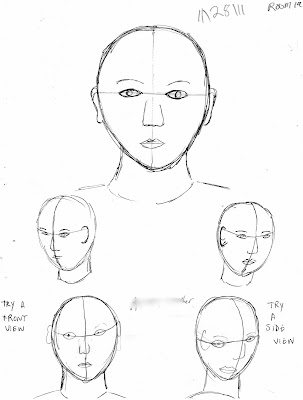Visual Arts Kindergarten
Communication and Expression Through Original Works of Art
2.5 Use lines in drawings and paintings to express feelings.


Visual Arts Kindergarten
Communication and Expression Through Original Works of Art
2.5 Use lines in drawings and paintings to express feelings.


Develop Perceptual Skills and Visual Arts Vocabulary
1.2 Distinguish among various media when looking at works of art (e.g., clay, paints, drawing materials).
Communication and Expression Through Original Works of Art
2.8 Create artwork based on observations of actual objects and everyday scenes















Visual Arts Grade Four
Develop Visual Arts Vocabulary
1.4 Describe the concept of proportion (in face, figure) as used in works of art.
Skills, Processes, Materials, and Tools
2.2 Use the conventions of facial and figure proportions in a figure study.
Communication and Expression Through Original Works of Art
2.5 Use accurate proportions to create an expressive portrait or a figure drawing or painting.
This lesson had many goals I wanted the Fourth graders to accomplish:
1. Learn how to cooperatively work with partners to create a work of art
2. learn proper pencil drawing techniques
3. learn how to use proportion to create a portrait
4. Hone their ability to draw what they see, rather than what they think
5. learn to use shapes to draw a human figure rather than directly to details
Below you will see an example of the worksheet I handed out to the class
in order to help them understand how to evenly balance the facial features.
The bottom two portraits were initially empty so students could practice
drawing the portrait looking straight ahead and a portrait looking to the side.
Stay tuned... eventually we will be creating some very colorful backgrounds
to fill behind the portraits!



















Grade Four : Emphasis Drawings,
Media: Pencil, Colored pencil, Marker
Students will use rulers and pencil to create abstract emphasis drawings.
Color theme: Complementary colors
Skills, Processes, Materials, and Tools
2.1Use shading (value) to transform a two-dimensional shape into three-dimensional form (e.g., circle to sphere).
2.8 Use complementary colors in an original composition to show contrast and emphasis.
Develop Visual Arts Vocabulary
1.1 Perceive and describe contrast and emphasis in works of art and in the environment.
1.2 Describe how negative shapes/forms and positive shapes/forms are used in a chosen work of art.

















